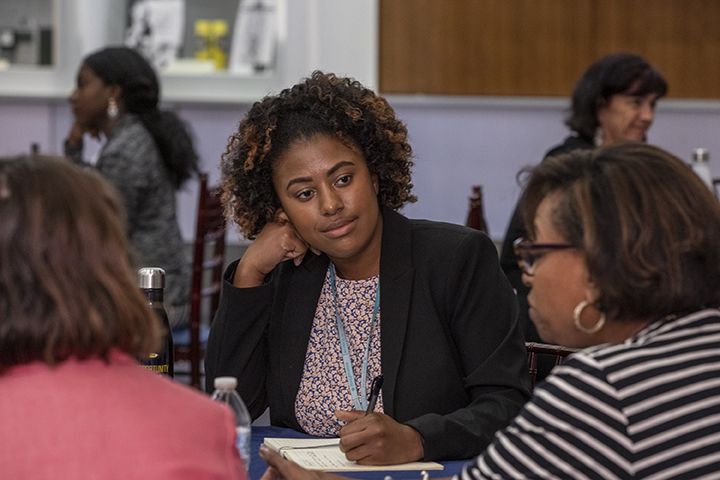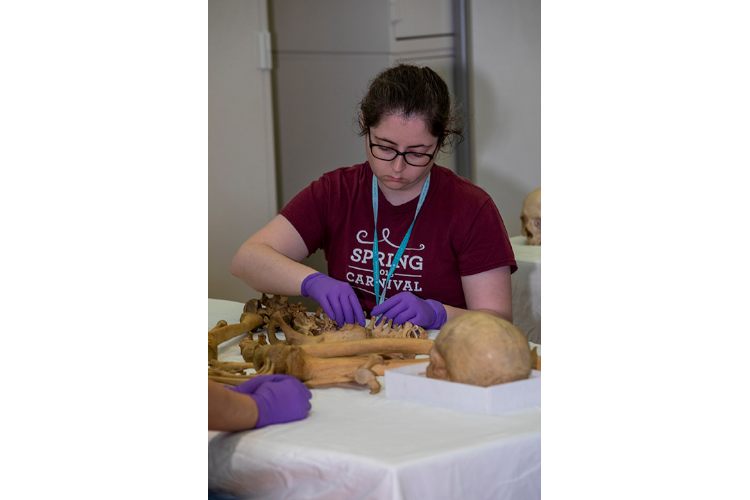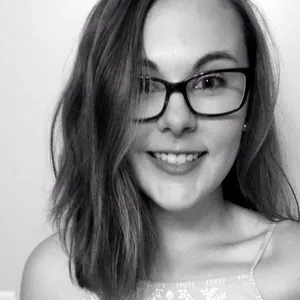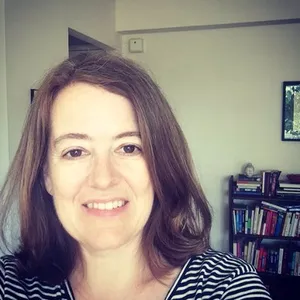YOUR IMPACT | YOUR SMITHSONIAN
“Because of Her Story” Interns Look to Historical Role Models
As they wrapped up their Smithsonian assignments this month, interns reflected on their summer experience and individual research projects, which included studying the skeletal remains of 19th century African American women; planning a major traveling exhibition on the history of American girlhood; and writing about the women who worked on the Apollo space program.
:focal(310x236:311x237)/https://tf-cmsv2-smithsonianmag-media.s3.amazonaws.com/blogging/featured/small-2019-03735.jpg)
For Cosette Zacarias, a Smithsonian summer internship studying American women fiber artists led to a place she didn’t expect: her hometown of Natchitoches, Louisiana.
During her 8-week assignment with the Smithsonian American Art Museum, Zacarias researched the lives of women fiber artists of the 19th through 21st centuries, to be featured in an upcoming exhibition, Women in Fiber. When she came across Clementine Hunter, a self-taught artist born in the 1880s on a plantation in Natchitoches, she felt a connection.
“She was inspiring,” said Zacarias. “Here was a woman who worked as a field hand and domestic worker. Though she didn’t attend school past the age of 5 or 6, she never needed to be convinced of her own artistic merits.”
Zacarias, a recent graduate of the University of Maryland at College Park, was one of 13 women’s history interns who worked across the Smithsonian this summer, uncovering stories of remarkable American women—past and present—and learning about museum practice.
The first-time internships, funded under the Smithsonian American Women’s History Initiative—Because of Her Story—provided stipends and housing to a cohort of undergraduates, recent graduates and graduate students selected through a competitive application process.
As they wrapped up their Smithsonian assignments this month, interns reflected on their summer experience and individual research projects, which included studying the skeletal remains of 19th century African American women; planning a major traveling exhibition on the history of American girlhood; and writing about the women who worked on the Apollo space program.
They cited hands-on mentorship, practical discussions with Smithsonian staff and discovering historic role models as highlights of the program.
Makia Jones, a recent University of Denver graduate, spent the summer at the National Museum of African American History and Culture planning a digital engagement campaign for Women’s History Month 2020. She said the internship provided her an invaluable opportunity to connect with her own African American heritage. Researching the story of writer Harriet Jacobs, an enslaved woman born in 1813 who kept a journal of her life experiences—now in the museum’s collection—revealed parallels with today’s #MeToo movement and issues of racial injustice, she said.
“This was the first time I’ve been given the resources, time and leadership to dive into my own history,” Jones said. “It was an amazing experience.

The experiences of women working in NASA’s Apollo space program in the 1960s resonated with Maddi Hellmich, an undergraduate student at Indiana State University. In conjunction with the Smithsonian’s Apollo 11 50th anniversary celebrations this summer, Hellmich researched several women who made the moon landing possible, including Poppy Northcutt, the first woman to work in a technical role in Mission Control.
“Northcutt was fighting for pay equity and women’s representation decades before she gained widespread recognition for her part in Apollo,” said Hellmich. “Her story shows the validity of personal experiences in history and their power to drive social change."
Bridget Hunt-Tobey, a graduate student in biomedical sciences at the University of Pittsburgh, worked with anthropologists at the National Museum of Natural History to reconstruct the life stories of African American women who worked at an iron furnace in Maryland in the 18th century, based on skeletons excavated from the site.
Hunt-Tobey, who is currently applying to medical school, appreciated the opportunity to sharpen her pathology skills as well as talk with Smithsonian curators and educators about museum practice.
“We looked at issues like the need to provide Braille guides for blind visitors or how it’s critical to remember that not everyone has home Internet access,” she said. “I’ll take that with me. As a practicing physician, when I listen to patients, I’ll need to take into account everything that’s going on in their lives, not simply physical symptoms.”

Women in the military provided inspiration for Kristi Mukk, a recent University of Richmond graduate who interned at the National Museum of American History this summer. Mukk helped plan a Smithsonian symposium titled “Towards a More Inclusive Military History,” which featured high-ranking women in the military, women veterans and scholars. One military historian presented on the experiences of 14 African American women who enlisted in the U.S. Navy during World War I—pioneers of their era.
“Military history has a particular, combat-driven male narrative, which often results in women’s voices not being heard,” Mukk said. “For this group of African American women … it’s an example of why the stories that get left out are just as important.”
The Smithsonian will offer women’s history internships again in summer 2020. Visit womenshistory.si.edu in early 2020 for updates.
Everything you read about in IMPACT is made possible in part thanks to support from lifelong learners like you. Donate today and power Smithsonian's mission to create and share knowledge with everyone, everywhere.
Want more stories about how the Smithsonian impacts your world? Join our community of curious, passionate knowledge-seekers from across the globe.


